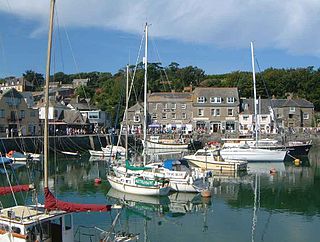
Padstow is a town, civil parish and fishing port on the north coast of Cornwall, England, United Kingdom. The town is situated on the west bank of the River Camel estuary, approximately 5 miles (8.0 km) northwest of Wadebridge, 10 miles (16 km) northwest of Bodmin and 10 miles (16 km) northeast of Newquay. The population of Padstow civil parish was 3,162 in the 2001 census, reducing to 2,993 at the 2011 census. In addition an electoral ward with the same name exists but extends as far as Trevose Head. The population for this ward is 4,434.
Lyonesse is a kingdom which, according to legend, consisted of a long strand of land stretching from Land's End at the southwestern tip of Cornwall, England, to what is now the Isles of Scilly in the Celtic Sea portion of the Atlantic Ocean. It was considered lost after being swallowed by the ocean in a single night. The people of Lyonesse were said to live in fair towns, with over 140 churches, and work in fertile, low-lying plains. Lyonesse's most significant attraction was a castle-like cathedral that was presumably built on top of what is now the Seven Stones Reef between Land's End and the Isles of Scilly, some 18 miles (29 km) west of Land's End and 8 miles (13 km) north-east of the Isles of Scilly.

Dorothy Pentreath was a Cornish fishwife from Mousehole. She is one of the last known fluent speakers of the Cornish language. She is also often credited as the last known native speaker of Cornish, although sources support the existence of other younger speakers of the language who survived her.
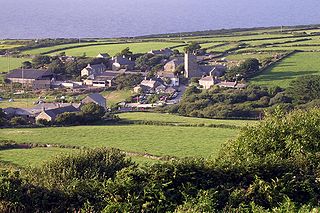
Zennor is a village and civil parish in Cornwall, England, United Kingdom. The parish includes the villages of Zennor, Boswednack and Porthmeor and the hamlet of Treen. Zennor lies on the north coast, about 6 miles (10 km) north of Penzance, along the B3306 road which connects St Ives to the A30 road. Alphabetically, the parish is the last in Britain. Its name comes from the Cornish name for the local saint, Saint Senara.

St Buryan is a village and former civil parish, now in the parish of St Buryan, Lamorna and Paul in Cornwall, England, United Kingdom. In 2011 the parish had a population of 1412.

Brenda Wootton was a British folk singer and poet and was seen as an ambassador for Cornish tradition and culture in all the Celtic nations and as far as Australia and Canada.

Mullion is a civil parish and village on the Lizard Peninsula in south Cornwall, England, United Kingdom. The nearest town is Helston approximately 5 miles (8 km) to the north.

Nanjizal, also known as Mill Bay, is a beach and cove in the civil parish of St Levan, Cornwall, on the south-western coast of Great Britain. Situated one mile to the south-east of Land's End, Nanjizal has no direct access via road, and is usually reached via the South West Coast Path from Land's End in the north, or from Porthgwarra to the south. Nanjizal is also a noted bird watching location.
Morgens, morgans, or mari-morgans are Welsh and Breton water spirits that drown men.

Ia of Cornwall was an evangelist and martyr of the 5th or 6th centuries, flourishing in the area of St Ives, Cornwall. She is said to have been an Irish princess, the sister of Erc of Slane.
Cruel Coppinger is a semi-legendary figure in Cornish folklore. Coppinger was a real person, but various legends grew up around him, lending him near superhuman powers and a fearsome reputation. He is portrayed as huge and fearsome Dane who after being shipwrecked off Cornwall became the leader of a feared band of smugglers.

Cornish mythology is the folk tradition and mythology of the Cornish people. It consists partly of folk traditions developed in Cornwall and partly of traditions developed by Britons elsewhere before the end of the first millennium, often shared with those of the Breton and Welsh peoples. Some of this contains remnants of the mythology of pre-Christian Britain.
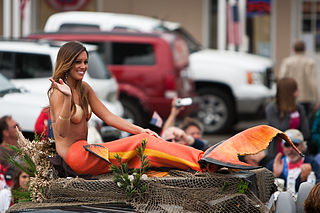
Mermaids, like many other creatures of mythology and folklore, are regularly depicted in literature, film, music, and popular culture. In the folklore of some modern cultures, the concept of the siren has been assimilated to that of the mermaid. For example, the French word for mermaid is sirène, Italian sirena, and similarly in certain other European languages. This usage existed by the Middle Ages.
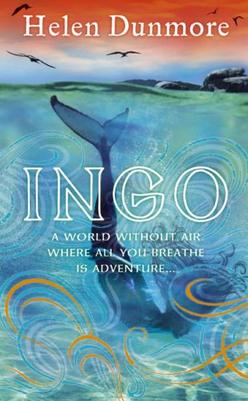
Ingo is a children's novel by English writer Helen Dunmore, published in 2005 and the first of the Ingo pentalogy.
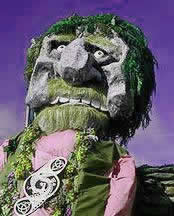
Bolster day is an annual festival held at Chapel Porth cove near St Agnes, Cornwall, UK. The festival is held on the Sunday before the early Spring Bank Holiday in May every year and reenacts the events of the Cornish legend of Bolster the giant and Saint Agnes with use of giant puppets and local performers. During the day there are also Cornish dance displays and other entertainments. It is held on the last Sunday before the May Day bank holiday.

The Doom Bar is a sandbar at the mouth of the estuary of the River Camel, where it meets the Celtic Sea on the north coast of Cornwall, England. Like two other permanent sandbanks further up the estuary, the Doom Bar is composed mainly of marine sand that is continually being carried up from the seabed. More than 60 percent of the sand is derived from marine shells, making it an important source of agricultural lime, which has been collected for hundreds of years; an estimated 10 million tons of sand or more has been removed from the estuary since the early nineteenth century, mainly by dredging.

Zennor Head ; is a 750-metre (2,460 ft) long promontory on the Cornish coast of England, between Pendour Cove and Porthzennor Cove. Facing the Atlantic Ocean, it lies 1 kilometre north-west of the village of Zennor and 1.6 kilometres east of the next promontory, Gurnard's Head. The granite (Killas) cliffs rise over 200 feet (60 m) from the sea and the highest point of the headland is 314 feet (96 m) above sea level, with an Ordnance Survey triangulation station. Zennor Head is on the South West Coast Path, which follows the cliff edge closely, skirting the entire perimeter of the headland. The promontory is part of the Penwith Heritage Coast, and is the largest coastal feature in the United Kingdom that begins with the letter "Z". It gets its name from a local saint, Senara. Zennor Head was mined for copper and tin in the Victorian Era. There is no longer any residential or commercial occupancy on the headland, but it is occupied by a variety of coastal animals and plants, such as kestrels and gorse.
Saint Senara, also known as Asenora, Sinara, or Sennara, is a legendary Cornish saint with links to the village of Zennor on the north coast of Cornwall, UK. The Church of Saint Senara, Zennor is dedicated to her, and according to legend her name inspired the name of the village of Zennor along with local features like Zennor Head and Zennor Quoit.

St Senara's Church, in Zennor Churchtown, Cornwall, England, UK, is the parish church of the parish of Zennor. It is in the Deanery of Penwith, Archdeaconry of Cornwall, and Diocese of Truro. It is dedicated to the local saint, Saint Senara, and is at least 1400 years old, though it was rebuilt in the 12th century. It is a Grade I listed building.

The Mermaid of Zennor is a popular Cornish folk tale that was first recorded by the Cornish folklorist William Bottrell in 1873. The legend has inspired works of poetry, literature and art.
















